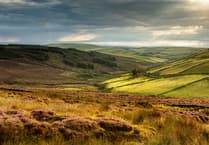The official advice from government wildlife experts is to avoid planting daffodils because they’re not native to the Isle of Man.
The information came to light after the Department for Environment, Food and Agriculture advised the Manx Utilities Authority against planting daffodils.
A local resident gave the MUA bulbs to plant near Grenaby after which the authority sought advice from the DEFA. wIn spite of the official advice, the authority planted the bulbs.
A government spokesperson said: ‘DEFA’s ecosystems team’s advice – in line with best practice – would be to plant native species appropriate to the habitat concerned.
‘There’s certainly no ban on or issues with daffodils being planted, however.’
The ‘wildflowers of the Isle of Man’ website entry for wild daffodils, the most common species of the plant, says that they ‘can be found all over the island and are very hard to miss’.
The wild daffodil can be found in places such as Port St Mary, Bradda Head, Fleshwick, Silverdale Glen, Port Soderick, Silverburn River, Niarbyl, Glen Maye, Scarlett Point, Ballannette, Glen Mooar, Glen Auldyn, Clypse and Kerrowdhoo, Maughold, Port Grenaugh and the Calf of Man
The entry also says: ‘In folklore, it is said that daffodils grow wild on the sites of old religious orders.
‘Several varieties of Narcissus pseudonarcissus can be found on the island, but this is the most common.’
Their Manx name ‘lus y ghuiy feie’ roughly translates to ‘wild goose plant’.
Traditionally, geese were brought into the house by locals to lay their eggs but it was considered unlucky to bring daffodils into the house for fear that the goose would mistake the yellow flowers for goslings and stop hatching its eggs.
Daffodils have been seen in the British Isles since the 17th century and were believed to be from Spain and Portugal originally.
The MUA planted the daffodils as part of the reinstatement phase of its water main installation from St Mark’s to Grenaby.
This phase includes leaving the work site in ‘a better way than the authority found it’, which includes planting flowers to improve the landscape.
The DEFA takes its advice on flora and fauna from the ecosystems team, whose job it is to ensure that the island’s ecosystem supports Manx wildlife and horticulture.





Comments
This article has no comments yet. Be the first to leave a comment.